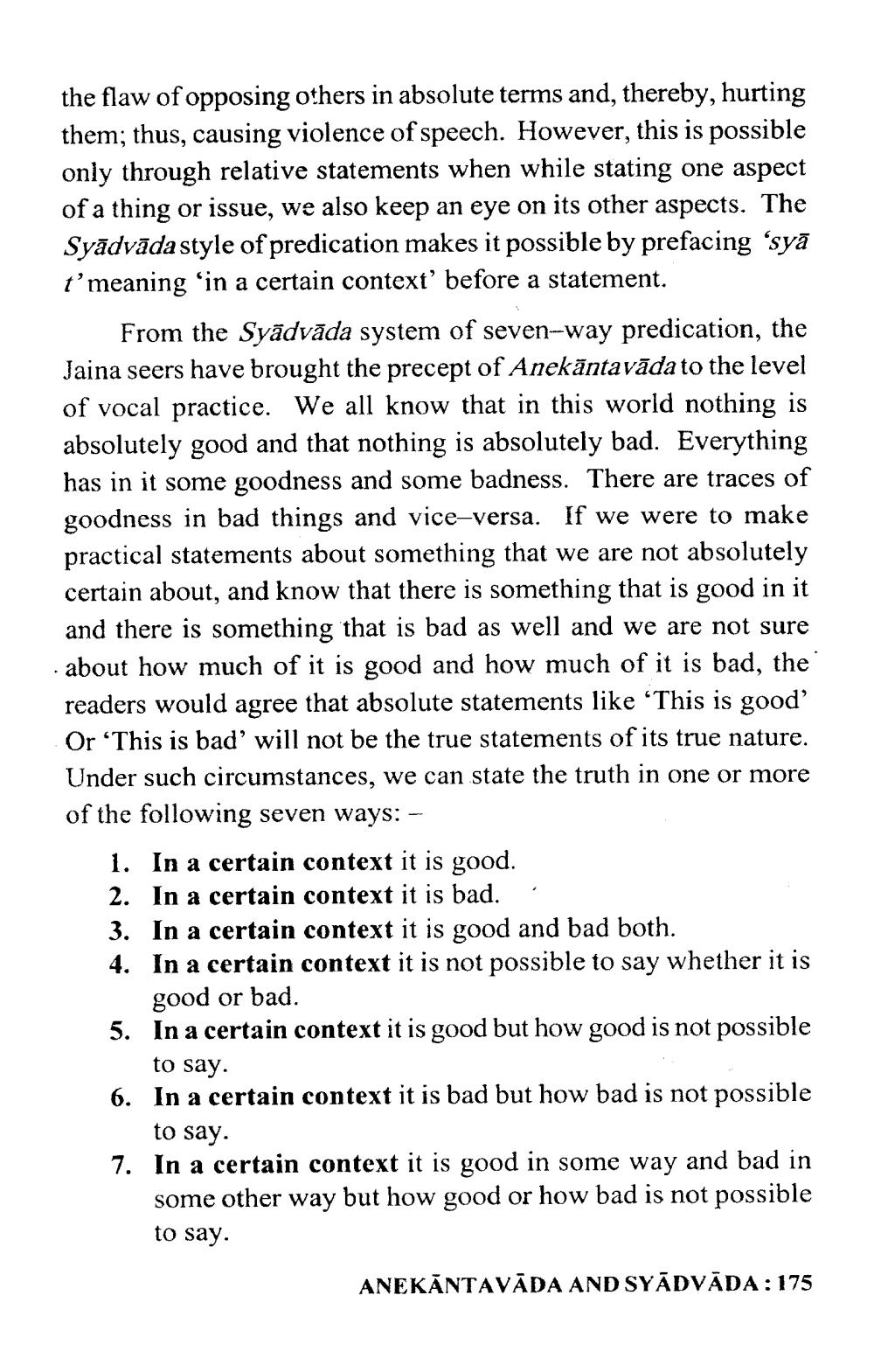________________
the flaw of opposing others in absolute terms and, thereby, hurting them; thus, causing violence of speech. However, this is possible only through relative statements when while stating one aspect of a thing or issue, we also keep an eye on its other aspects. The Syādvāda style of predication makes it possible by prefacing ‘syā t' meaning ‘in a certain context' before a statement.
From the Syādvāda system of seven-way predication, the Jaina seers have brought the precept of Anekāntavāda to the level of vocal practice. We all know that in this world nothing is absolutely good and that nothing is absolutely bad. Everything has in it some goodness and some badness. There are traces of goodness in bad things and vice-versa. If we were to make practical statements about something that we are not absolutely certain about, and know that there is something that is good in it and there is something that is bad as well and we are not sure · about how much of it is good and how much of it is bad, the readers would agree that absolute statements like 'This is good' Or ‘This is bad will not be the true statements of its true nature. Under such circumstances, we can state the truth in one or more of the following seven ways: -
1. In a certain context it is good. 2. In a certain context it is bad. 3. In a certain context it is good and bad both. 4. In a certain context it is not possible to say whether it is
good or bad. 5. In a certain context it is good but how good is not possible
to say. 6. In a certain context it is bad but how bad is not possible
to say. 7. In a certain context it is good in some way and bad in
some other way but how good or how bad is not possible to say.
ANEKANTAVĀDA AND SYĀDVĀDA: 175




